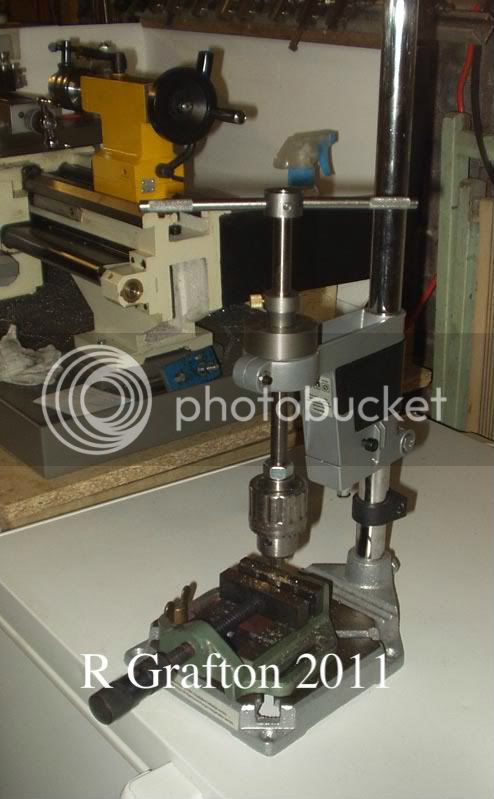Just a few tips on using small taps. This is aimed more towards the new people to model engineering, and so in laymans terms.
Make sure you always have the correct sized hole. Or if you haven't got the exact sized drill always go larger, not smaller. As long as you don't overdo the size, you will still get a good grip from your thread. In fact, on some charts it will tell you what the maximum size is that you can use and still be 'safe'.
ALWAYS use a good quality tapping lube. A reasonably priced bottle will last you for years. I usually decant some into a syringe, that way it gets to where it is really needed and doesn't waste the lube.
Buy the best quality taps you can afford, cheap taps are a real false economy. If you pick up a box from say a garage sale, unless they are protected in their original wrapping, and look to be new, consider them as scrap. Bouncing around loose in a box, or a bit of rust, will take the cutting edges off straight away.
You can get very good discounts if you buy in bulk from the manufacturers. If I buy 10 super quality ones, they are actually cheaper per piece than buying a mediocre one.
When cutting the thread, at the first sign of galling (usually you can hear it squeak), dump the tap and use a new one, you are getting very close to having it snapping off down the hole. Your taps need to be razor sharp. Small taps are just not worth trying to resharpen. Larger ones can be 'rescued' rather easily. Taps do wear out and go dull, it all depends on what materials you are cutting, so don't expect those small taps to last forever, so you should always have some in reserve when doing a lot of threading.
If cutting thru holes, depending on the type of tap being used, the swarf either drops out of the bottom, or gets pushed back out of the hole, most times, you will be using the drop out of the bottom type. No problem with thru holes, but the same thing happening in a blind hole can give you the same symptoms as above, galling in the hole. So every so often, retract the tap completely and either blow the swarf out of the hole, or turn the job upside down for it to fall out. Trapped swarf is another cause of easily broken taps.
For cutting, I use the regime of one full turn forwards, one third of a turn back. This breaks up the swarf as you are cutting and so it doesn't bunch up and cause the tap to jam in the hole. If the tap does jam, try very gently going fwds and backwards a tiny amount, don't try and force it too far. After maybe a dozen rocks back and forth the bit of trapped swarf should break up and allow you to retract completely to get rid of it. DON'T just carry on as though nothing has happened, clear it out first.
I know it can be difficult for some of you because you are on such tight budgets, but in all honesty, buying good taps save money in the long run.
I have a lot of experience using small taps, but also I have the hands of a gorilla so can't get that super 'feel' which is required sometimes, but by following the above rules, it can be a great leveller, and just by following those few basic rules, almost anyone can become proficient at using small taps. I have cut thousands of threads over the last two or three years, and have only broken one tap down a hole, and that was my own fault, for trying to do it by holding the part in my fingers rather than on the tapping stand.
Bogs





















![Learning AutoCAD Civil 3D 2014 [Online Code]](https://m.media-amazon.com/images/I/51F3yi9fokL._SL500_.jpg)
































![DreamPlan Home Design and Landscaping Software Free for Windows [PC Download]](https://m.media-amazon.com/images/I/51kvZH2dVLL._SL500_.jpg)










